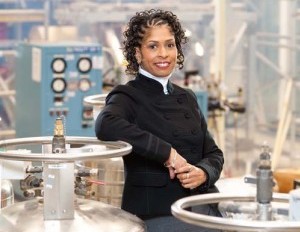 |
| Dr. Aprille J. Ericsson, NASA, image source link below |
Topics: African Americans, Diaspora, Diversity, Diversity in Science, History, Women in Science
The Aerospace Engineer
Aprille J. Ericsson, Ph.D.
Deputy Instrument Manager
NASA Goddard Space Flight Center
As the deputy instrument manager for the ATLAS Instrument team at NASA, Aprille J. Ericsson leads development of an instrument to house satellite-based lasers used to measure the topography of ice sheets from space in order to measure global climate changes.
Ericsson, who holds a master’s of engineering and Ph.D. in mechanical engineering in aerospace from Howard University and who earned a bachelor’s of science in aeronautical/astronautical engineering from Massachusetts Institute of Technology, was previously one of the lead engineers on the concept study report for GEMS, or the Gravity and Extreme Magnetism Small Explorer. The unmanned observatory, which is scheduled to launch no later than April 2014, will be the first to measure polarized X-rays to study supermassive black holes and magnetars. Ericsson's work was influential in winning $105 million of funding for the project in 2009.
Ericsson was also the project engineer for LOLA, a lunar orbiter laser altimeter, which created an unprecedented topographic map of the moon’s landscape in late 2009.
“High school students need to be encouraged to do summer programs. If they have an interest in engineering or science they need to apply at field centers at NASA and NOAA so they get a feel for what they want to do," says Ericsson, who did the same at a young age. “It’s really important to have [hands-on lab] exposure as early as freshman and sophomore year. They perform better with their course work because they learn in an applied atmosphere."
Dr. Aprille J. Ericsson, Marcia Wade Talbert, Black Enterprise: Women in STEM
Comments